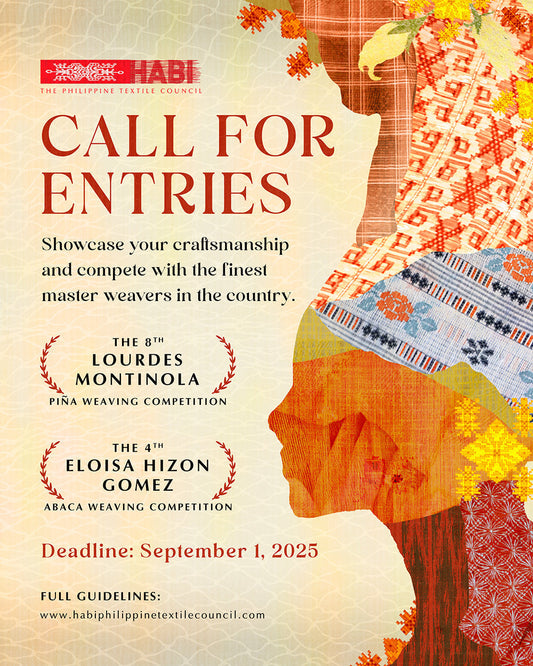In the early years, Tausug weavers wove in silk when Jolo became a trading port for Chinese textiles but it hasn't been available to them for decades. Nowadays, they use sinulid or locally available polyester threads.

Padirna Jarad Sanaani and Ruhina Rajik Muhaimer are Tausug women weavers from Sulu. Since 2021, Rambie Lim of Crafted Pilipinas has been mentoring them through the Accelerate Bangsamoro program, which aims to uplift and promote Bangsamoro women and their products. Today, they are exploring the use of Philippine silk in weaving Siyabit for the first time.

They used 60 denier silk from OISCA TC, Bago City, Negros Occidental, a stronger and more robust type, which is needed to maintain the tension required for the warp of a tapestry loom.

Since Tausug weavers use a lot of colors in their Siyabit weaving, Rambie sent the silk threads to Rurungan sa Tubod Foundation in Puerto Princesa for processing.

Though they normally work with silk, this would also be the first time for them to dye 60 denier silk in a wide variety of colors.

The silk is soaked, heat dyed, rinsed, and dried.

From skeen to spool. Dyed silk threads are spooled for easier usage. Since the crew of Rurungan Sa Tubod Foundation usually spools in smaller quantities, adjustments needed to be made for bigger cones.

Then, Alden Muhaimer, from Maimbung Sulu, prepared the Siyabit Weaving equipment.

On the photo above, from top to bottom in duplicates, Alden made the Pailuhan (upper cloth beam), Utusan (lower cloth beam), Bayla (batten), Susugi (tapestry paddle/tool), Bulang (middle cloth beam) and Sud (reed).

Silk stands out for its softness and smoothness compared to other fabrics but because of its fine and lustrous texture, it can also be difficult to use for weaving.

The pieces being woven by Ruhina and Padirna for the Benilde Open are Kambut Siyabit, narrow fabrics that are usually a hand span wide and about an arm span and a half long. These are traditionally used as belts or shawls in the Tausug outfit.

Photo from Benilde Open
The Siyabit tapestry is the official representation of the Tausug spirit and resilience. It's the symbol of Tausug determination and dedication in the face of adversity.
“Exploring the Use of Philippine Silk in Tausug Syabit Weaving” exhibition at Benilde Open Design + Arts runs until June 30, 2024.




